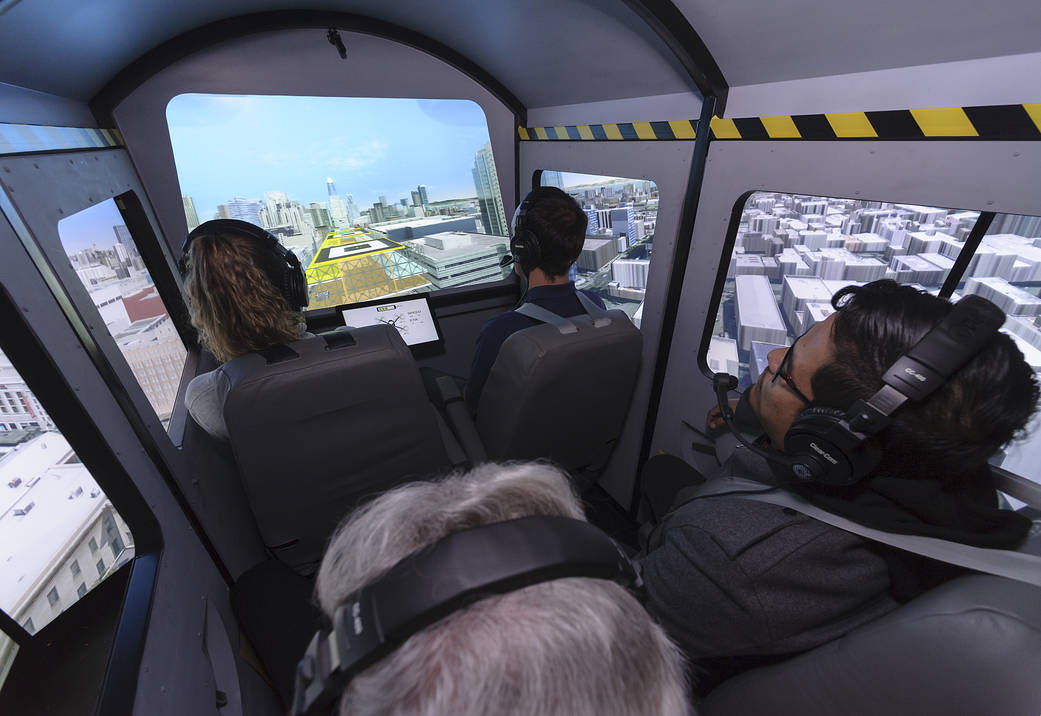Four passengers participate in a simulation of an air taxi ride at NASA’s Vertical Motion Simulator, or VMS. Located at NASA’s Ames Research Center in California’s Silicon Valley, the VMS allows NASA researchers to study the limits of what makes a comfortable air taxi ride. These vehicles will take off vertically – flying from one building to another, for instance – before slowing down to a hover and landing.
NASA can help aircraft designers ensure a ride that’s comfortable to most future passengers by identifying how much and what kind of motion people will tolerate. The simulated flight shown here in the passenger research cockpit included out-the-window graphics recreating a rooftop landing in San Francisco. These images, along with the motion of the VMS cockpit – up to 60 feet vertically and 40 feet horizontally inside a ten-story tower – contribute to the feeling of a real flight, including turbulence and wind gusts.
This kind of flight will make for a commute that most of us aren’t used to, but NASA will share what it learns from these tests with the developing air taxi sector to help us all have a smooth ride across the city of the future.
The air taxi ride qualities research conducted at the VMS is one element helping NASA lead the nation in opening a new era in air travel called Urban Air Mobility. The vision for UAM is that of a safe and efficient air transportation system where everything from small package delivery drones to passenger-carrying air taxis is operating above populated areas.



























